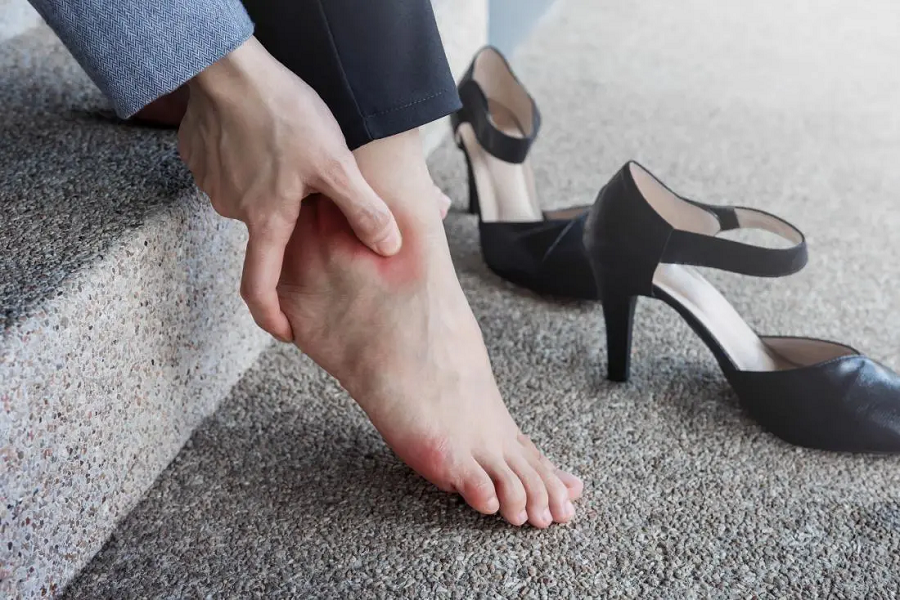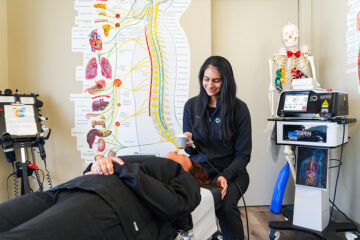What Are the Common Causes or Reasons for A Heel Pain?

Heel pain can affect about 2 million Americans every year making it difficult for you to live your life normally. It affects people of all ages and gender. Whether it is sharp or dull, if it lingers around for weeks or days then you will have to visit a podiatrist who can help you reduce your discomfort. Heel pain can interfere with your day-to-day activities making it difficult for you to stand, walk or run.
If you are looking for a podiatrist Irvine then you need to make an appointment with a podiatrist clinic in Irvine. Dr. SimaSoltani’s Office in Irvine is one of the best in treating any foot or joints related problems. They perform everything including surgeries and treatments related to joints, ankle pain, plantar warts, foot care, wound care, and many more.
A podiatrist is a foot doctor who can determine if this heel pain is a result of any structural problems related to the foot and ankles. It is said that heel pain at an early stage can be treated with conservative measures too. Thus, do not ignore the pain and take the help of an Irvine podiatrist before it becomes chronic and debilitating.
Development of heel pain
A person may experience pain, soreness, and tenderness anywhere in the heel. This includes:
- Below the heel
- Behind the heel
- Within the heel bone
Symptoms of the heel pain
The most common symptom includes a sharp pain at the bottom of the heel. It is the most intense pain that happens when you first get up in the morning or when you get up from the chair after a long time of inactivity. It will just feel like pain caused by knife stabbing, which then becomes dull after a particular period of time. If you are an active person, who does a lot of running or jogging then the pain will go away for some time only to return after some time or the next morning.
Causes of heel pain
The most common potential causes of the heel pain include:
Plantar fasciitis:
This affects the band of tissues that are presently connecting the heel bone and the toes. This will cause pain in your heel and a mild ache at the back of your leg too. you may also experience severe pain along with tenderness and stiffness, which gets worse in the morning. An athlete or a sports person is more prone to this problem, especially if you play basketball or tennis. You are at higher risk to get this if you are in middle age.
Achilles Tendinitis:
This affects the Achilles tendon. This is a band of tissue that connects your heel bone to the muscle calf. The tendons get inflamed when overused causing pain. This can affect individuals who play sports like basketball and tennis. Here too middle-aged people are more susceptible to this pain as with aging the tendons become weak. This pain is usually mild and dull at the beginning. If avoided then can lead to more severe pain.

Bursitis:
Bursa is something that is present between the Achilles tendons and the heel bone. If you overuse it, it can lead to heel pain. This mainly happens when you stand on your tiptoes for a long time. It makes it difficult for your ankle or foot to move. Apart from this it also causes swelling, tenderness, or even a change in color. This especially hurts people like dancers and athletes.
Haglund’s deformity:
This causes a bony bump or a pump bump to appear at the back of the heel. They get inflamed or irritated resulting in chronic pain. Girls wearing high heels such as pumps can make the pain worse for themselves.
Sever’s disease (calcaneal apophysitis):
This affects children in the age group of 8 to 14 years. Kids who participate in activities like running, and jumping are more prone to this problem. The more there is an increase in the activity, the more it affects the growth plate at the back of the heel.
Bone bruise:
This happens when you step on a hard object like a stone that can bruise the fat below the heel. Here you may feel a kind of tenderness just when you walk. There will be no discoloration seen.
Heel spurs:
This happens when you get chronic plantar fasciitis that can cause bony growth to form on the heel bone. They are usually not so painful but some might feel some pain.
Diagnosis of the heel pain
This is done by performing a physical exam. Your doctor may ask for some x-rays to check if you got arthritis, bone fractures, joint damage, or bone alignment. In very rare cases, you may be asked for MRI or ultrasound. This is used to know about soft tissue problems.
Heel pain usually goes away with non-surgical treatments. Your doctor may determine the cause and recommend the treatments. They might also show some stretching exercises or even orthotics in some cases. It is always better if you make an appointment with your Orange county podiatrist at the earliest.
Leave a reply
You must be logged in to post a comment.











